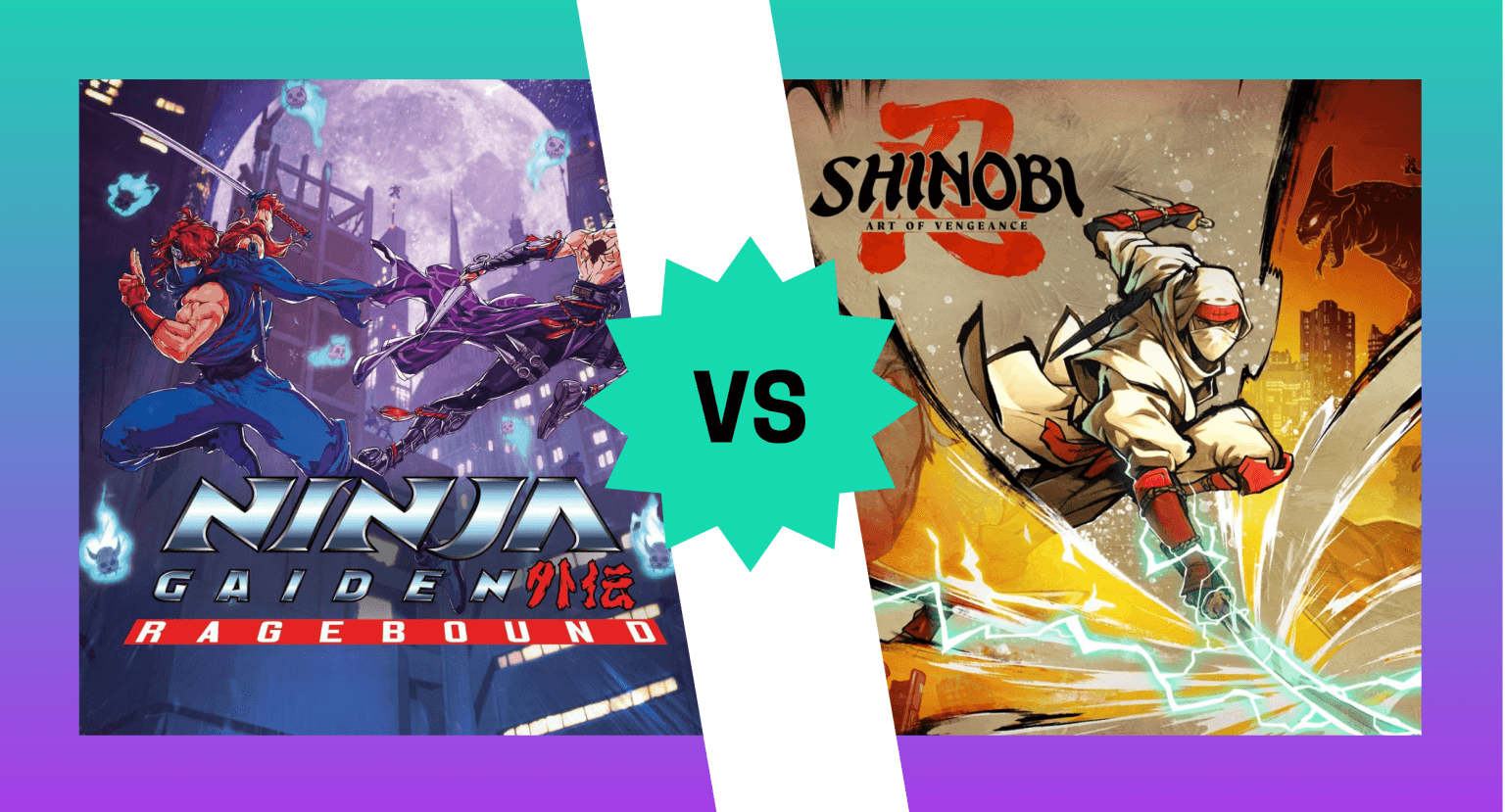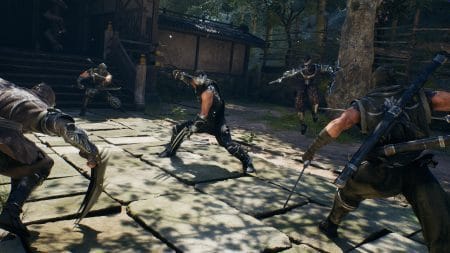With Ninja Gaiden 4’s recent release, 2025 continues to be the Year of the Ninja. The Xbox Game Studios-published title joins recent entries in the genre: July’s Ninja Gaiden: Ragebound (developed by The Game Kitchen and published by Dotemu in partnership with Koei Tecmo Games) and August’s Shinobi: Art of Vengeance (developed by Lizardcube and published by SEGA). Both shine as finely honed revivals of the classic ninja action games.
Both are brutal, stylish, and faithful to their roots, yet some of their design philosophies stand violently opposed. But once the shuriken fly, whose techniques prevail in the end?
This is a shinobi showdown between two titans of the genre, pitting precision vs. power, minimalism vs. expression, and rage vs. vengeance. We’ll decide the winner by examining each games’ stories, gameplay, level design, and overall presentation.


The Way of the Ninja
At their cores, both Ragebound and Art of Vengeance are homages to their 8- and 16-bit predecessors that defined side scrolling, arcade ninja action. While I won’t spoil the secrets of each ninja’s journey, both of their stories have their own spin on the modern-day ninja formula of duty, stoicism, sacrifice, and revenge.
In my review, I praised Ninja Gaiden: Ragebound’s narrative for its dynamic between its protagonists, Kenji and Kumori. It stands out from other entries in the series with a complex, motivated, and not overly sexualized leading woman. Kumori further stands out as a member of the Black Spider Clan, the Hayabusa clan’s sworn enemies.
This creates a charming enemy- to ally- dynamic after they are forced to share the same body in their quest to take down the demon lord and separate their bodies. Ragebound’s dual-protagonist structure, the banter, and a heartfelt ending give it a weight that Shinobi lacks.



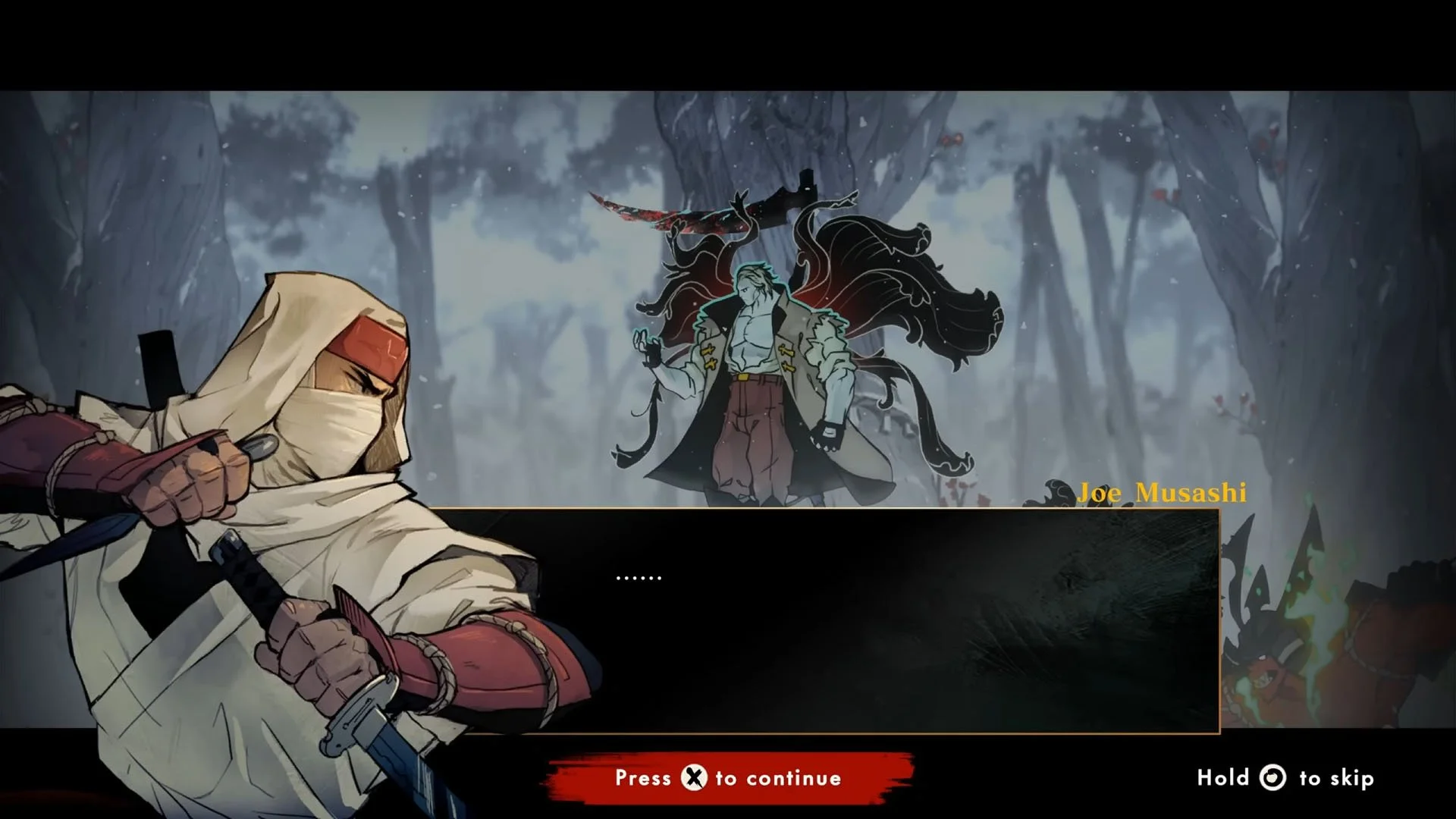


In Shinobi: Art of Vengeance, you play as Joe Musashi, a gruff, gravel-voiced warrior on a quest to save the world and avenge his fallen students after Lord Ruse and his demon generals burn his clan to ashes. The story is a straightforward tale of revenge and cold-blooded justice. It’s not groundbreaking, but it doesn’t need to be. The setup is just an excuse to style on legions of cyber-enhanced foes across temples, mountain villages, and neon-soaked cities.
By contrast to Ragebound’s protagonists, Musashi is a man of few words and many grunts. Sometimes, that kind of silence is funny. Other times, however, the character’s lack of range awkwardly stands out when interacting with a much more emotional, charismatic cast depicted with excellent voice acting.
While both games rely on static portraits and dialogue to tell their stories, Ragebound’s striking pixel-art direction and grounded character work give it a slight edge.
Story Winner: Ninja Gaiden: Ragebound

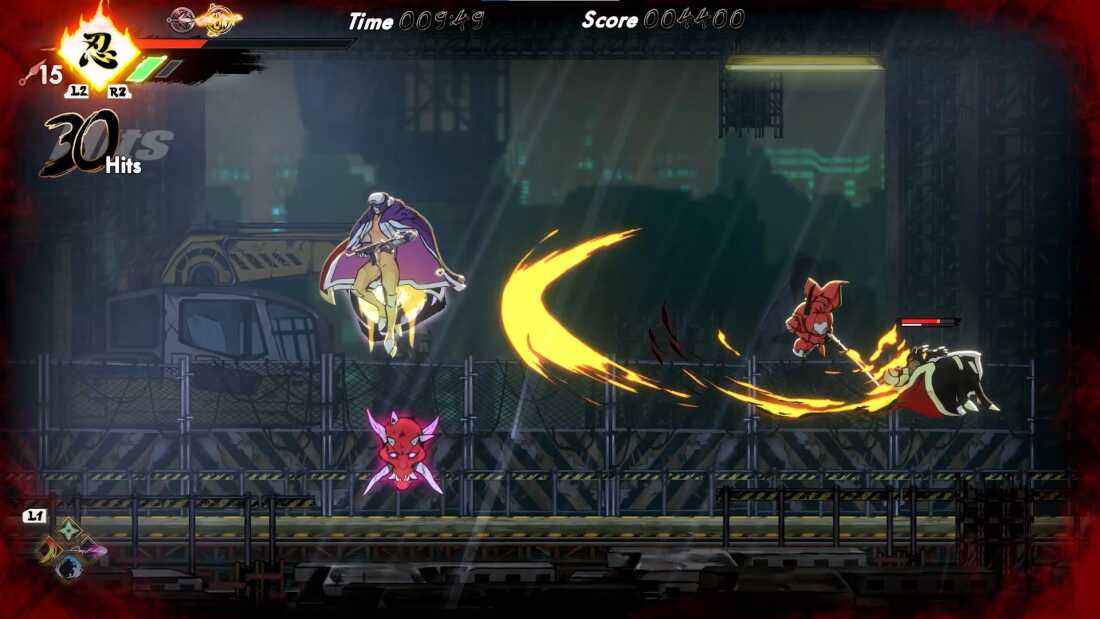
Precision vs. Style
Combat is the centerpiece of both games, but the philosophies behind them couldn’t be more different. The main thing they have in common is a complete lack of stealth. These shinobi charge right in through the front door.
Ragebound prizes precision. Every dodge, strike, and charged attack requires timing and intent. Its sidekick system and energy management mechanics make combat feel like a tactical puzzle dance. It’s fast, brutal, but always fair with its multiple difficulty options.
The game demands tactical crowd control. Most fiends die in a few slashes, but they can quickly flood the screen, overwhelm you, and knock you off the stage if you aren’t paying close attention. You also have to take note of each fiends’ attack patterns, especially the larger, tougher ones.
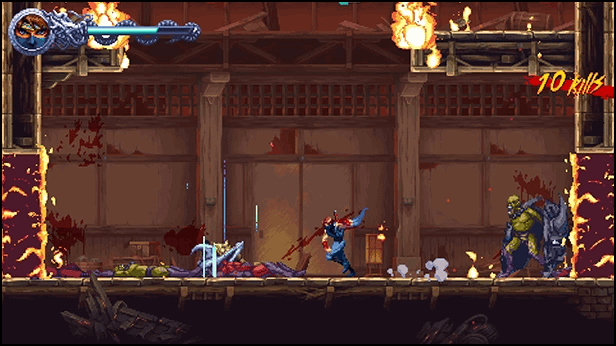
To keep up your momentum when the tough ones appear, you have to take advantage of any opportunity the game gives you to take out a glowing fiend. This gives you the strategic option to charge your next strike, save it, and drop the big fiends with one hit. That way, you don’t have to use your health to charge.
Shinobi, on the other hand, thrives on expression. Musashi’s toolkit is overflowing from the start: fluid combo chains, elemental ninpo mapped to each face button, a screen-clearing rage attack, and amulets to reward you for certain actions in combat. You find these amulets through exploring each level. As you progress, you can buy moves that open new combo routes, ninpo, and improve your healing efficacy.
Musashi’s devastating execution technique, where you dash at a blinding speed and finish your foe with a devastating slice, further adds a unique flow to the game. It gives you options: Whittle down an enemy’s guard and health just enough to execute them and earn extra money and heal, or just quickly dispatch them. Once mastered, you can take out multiple enemies on the screen with one satisfying execution attack, and the more you kill at once, the better the rewards.

Shinobi: Art of Vengeance is a game that begs you to let loose, rewarding flair and creativity as much as efficiency. The combat system, with its combo routes, chunky, hard-hitting attacks, dynamic movement, and style, make for a much more satisfying combat experience.
However, that freedom comes with a cost. As the game progresses, Shinobi’s encounters occasionally veer into cheap territory, with spongy bosses, frustrating enemy placement, and stages that drag a bit too long. Still, the satisfaction of chaining a dozen attacks into a screen-clearing execution is hard to beat.
Gameplay Winner: Shinobi: Art of Vengeance


Go Ninja, Go Ninja, Go!
When it comes to level design, Ragebound dominates.
The game’s mission-based structure offers focused, handcrafted challenges that push players to master its mechanics. Each stage feels tight, purposeful, and deliberate. It’s tough, but fair. The platforming, while frustrating at times, challenges you to learn each stage inside out. Its chase sequences in particular stand out and demand some intense platforming skills on the fly.
Shinobi opts for a hybrid approach between linear progression and light metroidvania exploration. The result is uneven. Some areas flow beautifully, while others overstay their welcome. Its platforming isn’t quite as clever as Ragebound’s, either. Musashi feels floaty as he navigates spaced out, occasionally empty levels. It’s a more open design, but one that lacks Ragebound’s weight and surgical focus.
Both games share similar philosophies to their platforming challenges, but Ragebound’s kunai are sharper in the end.
Level Design Winner: Ninja Gaiden: Ragebound


The Art of the Blade
This was the toughest category. Visually, it’s a tie — two schools of art with equally lethal results.
Ragebound evolves the 2D sprite-work legacy of classic Ninja Gaiden into a haunting, and colorful homage to a bygone era of heavy, square-shaped TVs, thanks to the minds behind the Blasphemous series. Every sprite animation, from character portraits to backgrounds to enemy explosions, bursts with detail and atmosphere.
Shinobi takes a more vibrant, hand-drawn approach reminiscent of Streets of Rage 4, leaning more into anime. Its fluid animations and bold color palette give it a distinct identity — less grim, more expressive, but equally beautiful.
Musically, both are powerhouses. Ragebound’s moody, percussive score contrasts beautifully with Shinobi’s blend of techno, hip-hop, and traditional Japanese instrumentation — complete with screaming electric guitar solos. Vibe-wise, you can’t go wrong with either title.
Presentation Winner: Tie

Shinobi Showdown: Final Verdict
Both are brutal, stylish, and faithful to their roots, yet some of their design philosophies stand violently opposed. But once the shuriken fly, whose techniques prevail in the end?
This was a close one. Both Ninja Gaiden: Ragebound and Shinobi: Art of Vengeance are dishes with a similar flavor of cyberpunk ninja combat. Shinobi offers a plate of style, freedom, and fluidity, making it a playground for hack-and-slash lovers like me. Ragebound counters with a casserole of tighter pacing, sharper design, and more emotional storytelling.
No matter the dish you choose, you’re going to get a gorgeous game. I personally enjoyed Shinobi’s more expressive combat, and that carried it pretty far for me. However, I have to concede that Ragebound is a better, more consistent 2D ninja-action experience with its gut-punching story, fine-honed level design, and precise, strategic combat. Shinobi’s blade techniques may be flashy and unbound, but Ragebound wins the dual with a keen, sturdy, and precise slash.
Overall Winner: Ninja Gaiden: Ragebound
Which of 2025’s 2D ninja games do you like more? Let us know in the comments! And stay tuned for more Shinobi Showdowns.
Donovan is a lifelong gamer with a love for fast-paced, single-player action games—especially Devil May Cry, Metroidvanias, indies, and action RPGs. He’s also an “advanced scrub” at fighting games and will play just about anything fun. Donovan is passionate about seeing more diverse characters and creators in the industry—or at least better hair options for Black people. With over a decade in journalism, he joined The Punished Backlog in 2023 to write more about what he loves. Follow him on Twitter and Instagram @dono_harrell.


